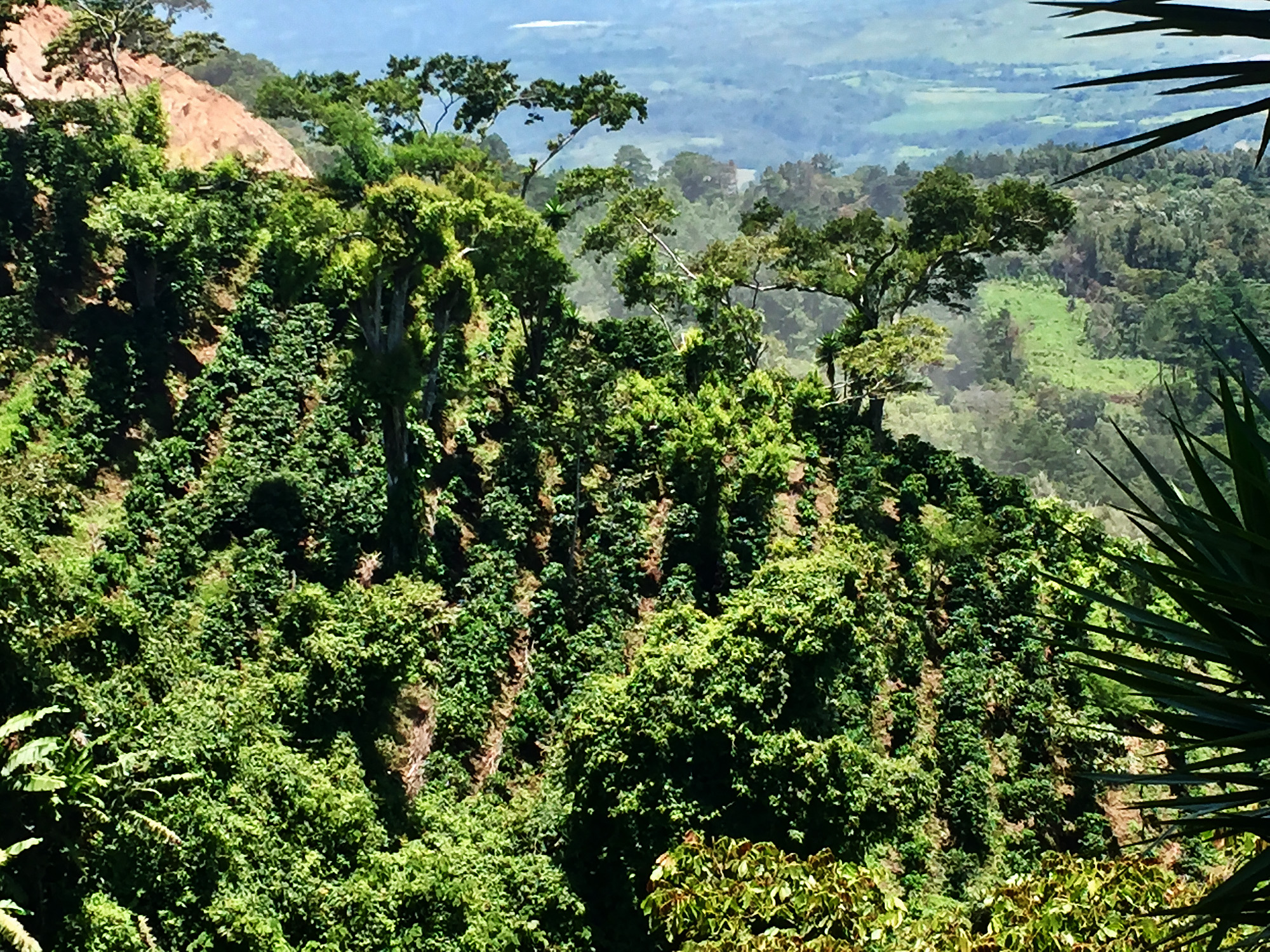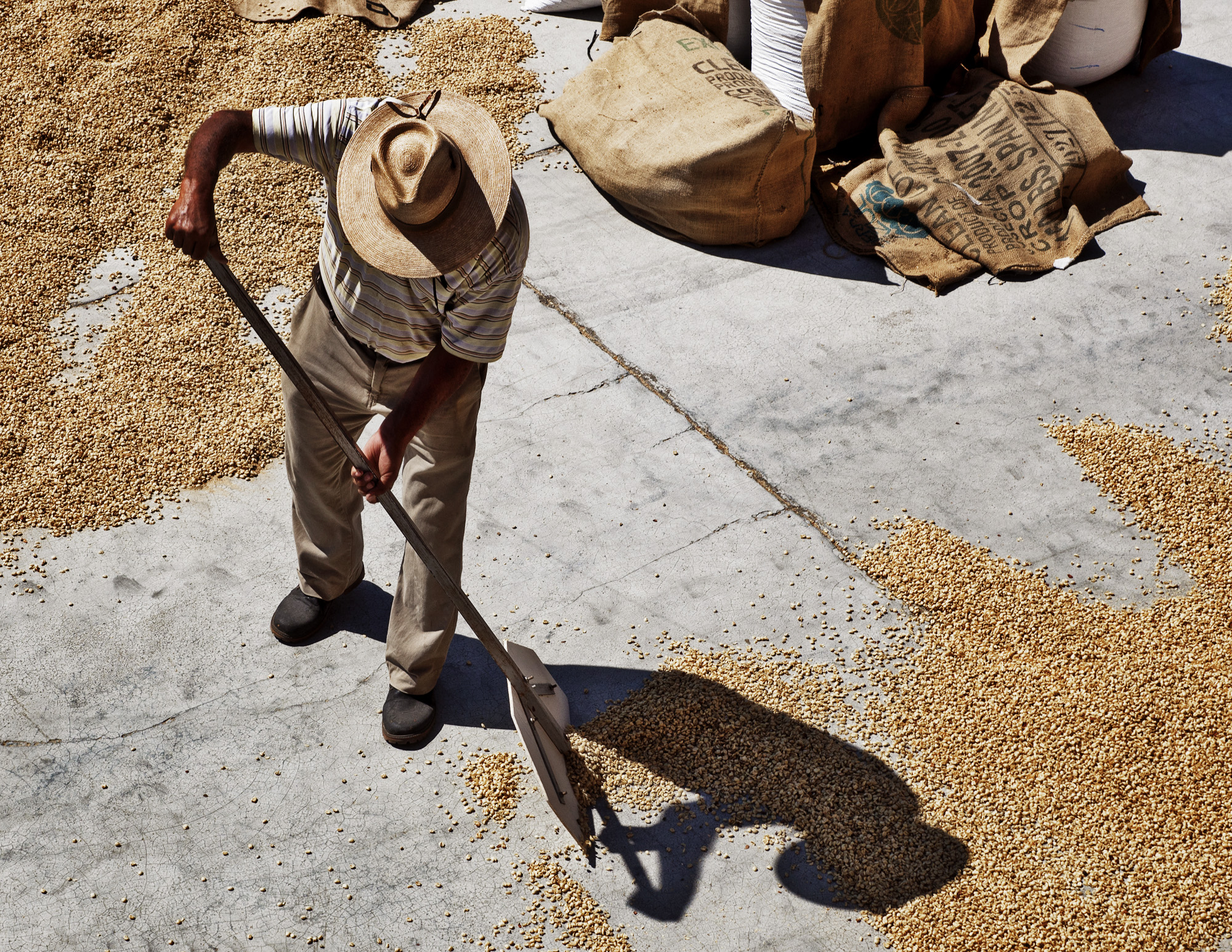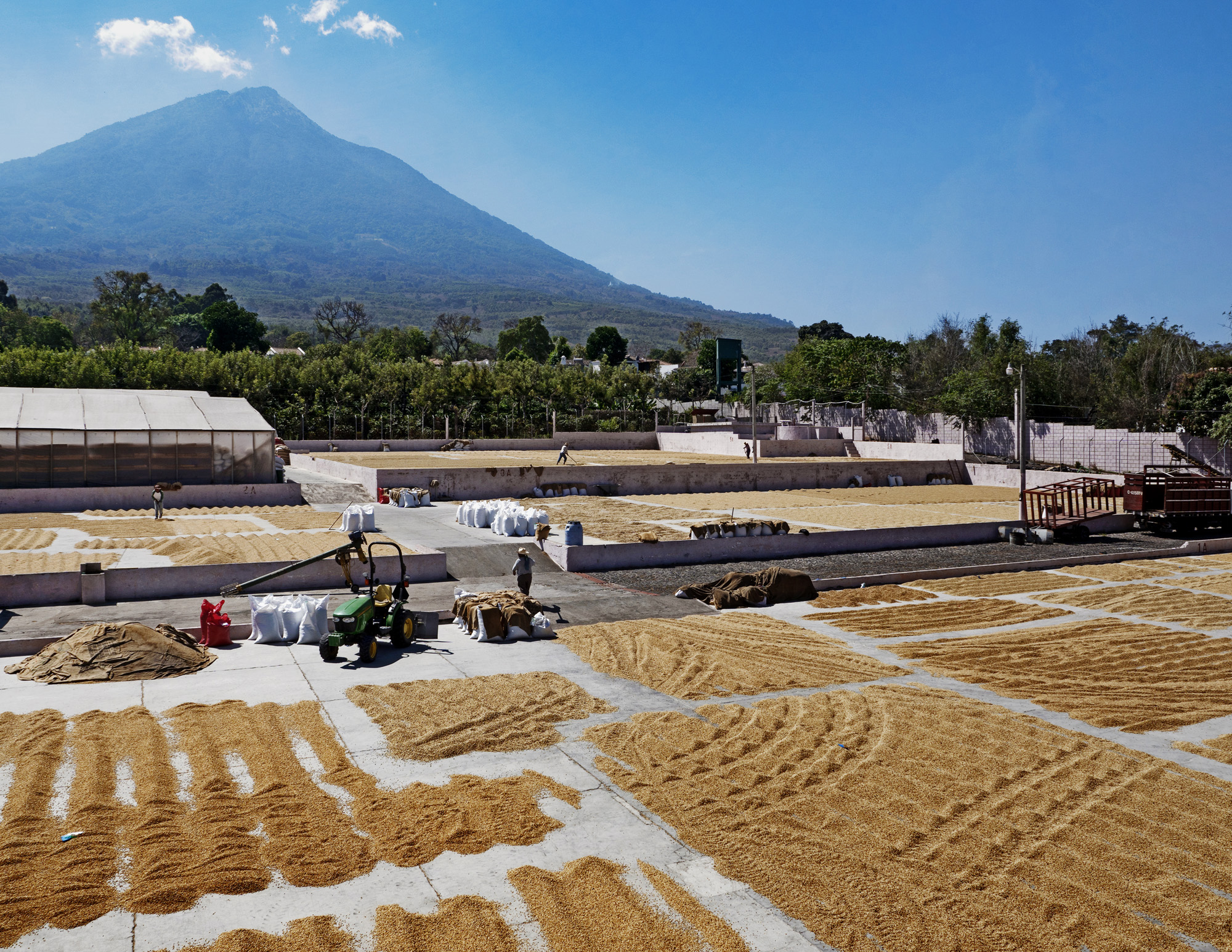Guatemala has a longstanding reputation for producing high-quality coffee, thanks to its gentle climate and rich, volcanic soils. Guatemalan coffee is generally grown at high altitudes: 80% of the country’s coffee exports are classified as Strictly Hard Bean (USDA 2019), a term that describes coffee grown at more than 1,370 metres above sea level.
Most coffee in Guatemala is grown by smallholders: out of 125,000 farmers in Guatemala, 120,000 (96%) cultivate less than 3 hectares (7.4 acres) of land. These smallholders account for 90% of the land area dedicated to growing coffee, most commonly the Bourbon, Caturra, Catuai, and Pache varieties.
Parchment being dried on patios at a large beneficio (wet mill). Most farmers bring their cherry to cooperatives or privately owned wet mills in Guatemala, but smallholders in more remote regions must process their own coffee.
Approximately 98% of coffee in Guatemala is grown under shade (Anacafé 2020), and agroforestry systems on coffee farms make up 7% of Guatemala’s forest cover. The most common shade tree planted on coffee farms is the nitrogen-fixing tree Inga (known locally as Cuje), which is used for firewood, but farmers also grow trees for timber or crops such as avocados or macadamia nuts alongside coffee. Nearly 20% of the value of the crop from a smallholder’s coffee plantation comes from the shade trees (Rice 2008).
 Closely planted rows of coffee growing among shade trees. Nearly all coffee in Guatemala is grown under shade, and shade trees are often important crops in their own right, providing an additional source of income.
Closely planted rows of coffee growing among shade trees. Nearly all coffee in Guatemala is grown under shade, and shade trees are often important crops in their own right, providing an additional source of income.
Coffee cultivation typically accounts for 60% of a smallholder farmer’s income. The rest may come from selling other crops, honey, or handicrafts or from labouring on other farms. Money sent back from family members working abroad, particularly in the United States,

